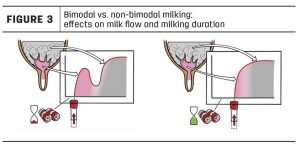
Digestive wellness
With consumers becoming increasingly concerned with wellness, a focus on gut health and probiotics is set to be a major trend for the dairy industry this year. Dairy is said to be one of the best vehicles for carrying probiotics into the body, with some yogurt bacteria having been shown to improve lactose digestion for those with an intolerance. Kefir in particular has seen a surge in popularity in the global food and health market this year, with the global probiotics market predicted to reach over USD 73 Billion by 2024.
Dairy proteins
Growth in protein consumption has driven innovation within the dairy industry, with many consumers turning to dairy proteins as their protein of choice. According to Gail Sabatura of AMCO Proteins, whey protein, the protein found in dairy, has a 10 year CAGR of 7.5% and the market shows no signs of slowing down. Dairy companies are advertising products as “high protein” largely due to their functionality as a health ingredient, particularly as they contain all of the essential amino acids. From coffee creamers to desserts, yogurts and ice cream, we are seeing a vast increase in the number of protein-enriched dairy innovations.
Flavour experimentation
Rising demands among consumers, particularly of the younger generation, for fun, new, interesting flavours are set to impact dairy product innovations. A recent report by NZMP was indicative of ‘adventurous’ consumption as global changes such as multiculturalism are opening up the possibilities for dairy. Alcohol-infused ice creams, flavoured butter and spicy marinated cheese are just a handful of the types of flavour experimentation we have seen in the dairy industry so far this year. With the plant-based dairy alternative sector now growing rapidly, competition is higher than ever and dairy companies have to think outside the box and experiment with flavours to stand out.
Reducing sugars
Delivering products with maximum taste but minimum guilt is set to be a challenge for dairy companies, to meet the demands of increasingly health-conscious consumers. So far this year we have seen a plethora of low-calorie ice creams and Cadbury’s have even released a new Dairy Milk bar containing 30% less sugar. However, some have said this still isn’t far enough as the British Retail Consortium (BRC) has argued for mandatory controls on unhealthy food. After the government introduced a sugar levy on drinks in 2018, this means we could potentially see high-sugar foods also being taxed, so we are set to see an increase in reduced sugar products for the dairy desserts market.
Camel milk
There are now a whole host of cow’s milk alternatives hitting the shelves and while many of these are plant-based nut milks, there is a new dairy contender – camel milk. Milk from camels is said to taste more similar to cow’s milk than plant-based alternatives and also garners many more nutritional benefits, including showing to be effective in treating diabetes. Camel milk is also lower in fat and cholesterol and rich in protein, so as trends lead towards consumers seeking healthier products with higher proteins, camel milk demand is likely to be on the rise this year.

























